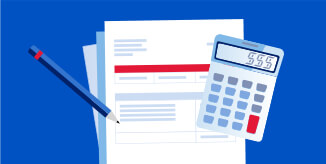How many credit cards should you have?
It all depends on your finances, lifestyle and goals. Here’s a rundown of some of the factors you’ll want to consider.
Read, 4 minutes
The average American is the proud possessor of four credit cards—that’s according to Experian, one of the three major credit bureaus. There can be sound reasons for keeping multiple cards. It can give you greater flexibility by offering more choices when you’re making a purchase. You can also tap into a greater variety of credit card rewards and special offers. And—if managed responsibly—multiple cards can actually help your credit score.
On the other hand, it can be harder to keep track of numerous cards, which can lead to overspending and missing payments—and damage to your credit score. As you think about how many cards might be your right number, here are some things to keep in mind.
How you can benefit from multiple credit cards
Convenience is a big reason for keeping multiple cards. By using different accounts for different purposes, you may find it easier to stick to a budget. Having a dedicated card for online shopping, for instance, can enable you to track spending and keep an eye out for identity theft or fraud. In addition, a separate card kept in reserve can provide backup if your primary card is lost, stolen or misplaced.
Another reason to add a card is to take advantage of special offers such as low introductory interest rates for balance transfers or rewards such as miles or points. A credit card issued by your favorite store might give you the best benefits when you shop there, but for purchases anywhere else you might prefer a general-use card with travel rewards to earn points toward your next vacation.
Article continues below
Related content
How multiple cards can raise your credit score
When used wisely, credit cards can help you build a strong credit report, which provides a snapshot of your financial life to lenders, employers, insurers and landlords. Your credit report lists credit cards along with mortgages and auto, student and other loans. It also shows the age, payment history, balance and credit limit for each card.
A credit report with fewer than four or five accounts is considered a “thin file” by the industry, and it may be considered insufficient to provide a reliable gauge of your ability to repay loans. As a result, lenders might require a higher down payment or interest rate, or might even decline your loan application.
How multiple cards might hurt your credit score
Your credit score is a numerical value based on the information in your credit report. Payment history and amounts owed are the two most important components. A good history of both on multiple cards can boost your credit score.
However, as you add cards, managing them can become more difficult—you might be more likely to make late payments, miss them altogether or accumulate a high level of debt. Any one of these can quickly bring down your score, which may in turn mean you’ll face higher interest rates, miss out on credit card rewards or even have trouble getting new loans.
Tips on managing multiple credit cards
These practices can help you get the greatest benefit from multiple cards while maintaining a healthy credit score:
Nothing is more important than paying on time. Through mobile and online banking, you can set up automatic payments and reminders to help manage multiple due dates. It’s always best to pay your card balances in full every month to avoid interest charges. If you can’t pay off the balance completely, make at least the minimum payment on each card and as much more as you can.
Quick tip
If you’re making only the minimum payment on each card, you might want to reassess your spending and consider strategies to pay off your credit cards.
Be careful not to use your additional credit cards to go deeper in debt. Lenders prefer that you use less than 30% of your credit limit. This applies to each card individually, and to all your cards added together. Your credit score could take a hit if the balance on just one card is more than 30% of that card’s limit—even if the total balance on all your cards is less than 30% of the total credit limit.
Leave older cards open and use them occasionally to prevent them from becoming inactive. This will give you a longer credit history and higher overall credit limit, both of which are helpful to your credit score.
Be judicious when it comes to applying for new cards. Applying for several cards within a short time can negatively affect your credit score. Each application triggers a hard credit check that’s recorded on your credit report and may make you look riskier to lenders.
Quick tip
If you’re planning to buy a car or a house, it’s a good idea to avoid applying for new credit cards for at least six months.
Multiple credit cards won’t necessarily harm your credit score. In fact, under the right circumstances, they can improve it. The key is to use your cards strategically, pay on time, keep an eye on how much credit card debt you’ve got and—perhaps most critically—don’t let the availability of credit alter your budget.
